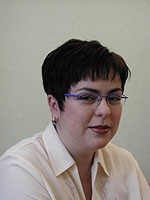Disanto G, Vcelakova J, Pakpoor J, Elangovan RI, Sumnik Z, Ulmannova T, Ebers GC, Ramagopalan SV, Stechová K. Diabetologia. 2013 Sep;56(9):2093–5. doi: 10.1007/s00125-013-2972-3. Epub 2013 Jun 23. IF: 6.487

Department of Paediatrics
Abstract
The concordance rate of monozygotic (MZ) twins is approximately 50% for type 1 diabetes and this, along with other evidence, supports a role played by both genetic and environmental factors in determining this disease. The epigenome of a cell can be defined as the group of epigenetic marks, such as DNA methylation, that influence gene expression and are responsible for cell specific differentiation. Epigenetic marks are influenced by environmental agents and therefore provide a potential explanation of how environmental exposure can impact upon human health. The presence of DNA methylation differences in CD14+ monocytes of MZ twins discordant for type 1 diabetes has recently been reported. We have further explored cell specific DNA methylation differences in diabetes in an unprecedented case of MZ quadruplets of which two individuals had diabetes, one was at a prediabetic stage and one was diabetes free.
The quadruplets comprise two sisters who developed type 1 diabetes at the age of 5 (T1D-1 and T1D-2), one sister who is currently at a prediabetic stage with abnormal first-phase insulin response and glucose concentration (Pre-T1D) and one more sister with no type 1 diabetes manifestations who was used as a healthy control (HC) (electronic supplementary material [ESM]). The HLA-DQ alleles carried by all sisters are DQA1*01/01 and DQ-B1*0501/0501, genotypes that are not commonly seen among type 1 diabetic patients. CD14+ monocytes and CD4+ T cells were isolated from venous blood using magnetic-activated cell sorting. DNA methylation was profiled using the Illumina HumanMethylation450 BeadChip in triplicate (Illumina, San Diego, CA, USA). All analyses were performed using the R package RnBeads.